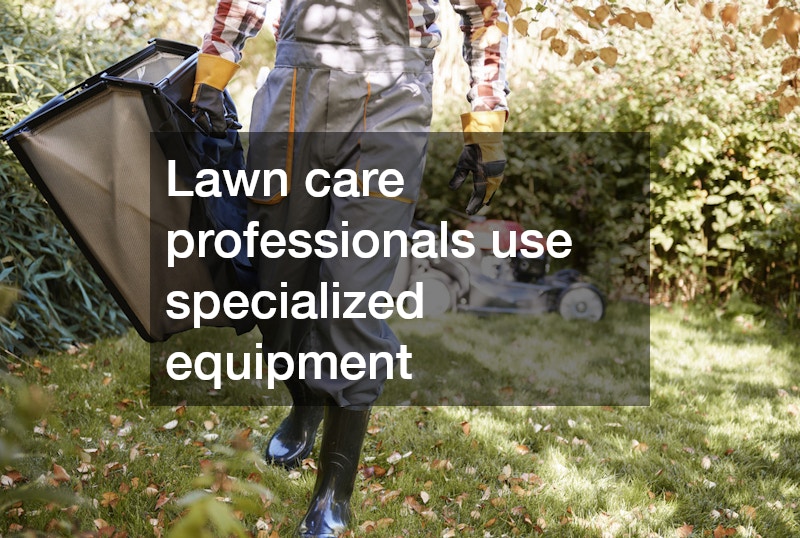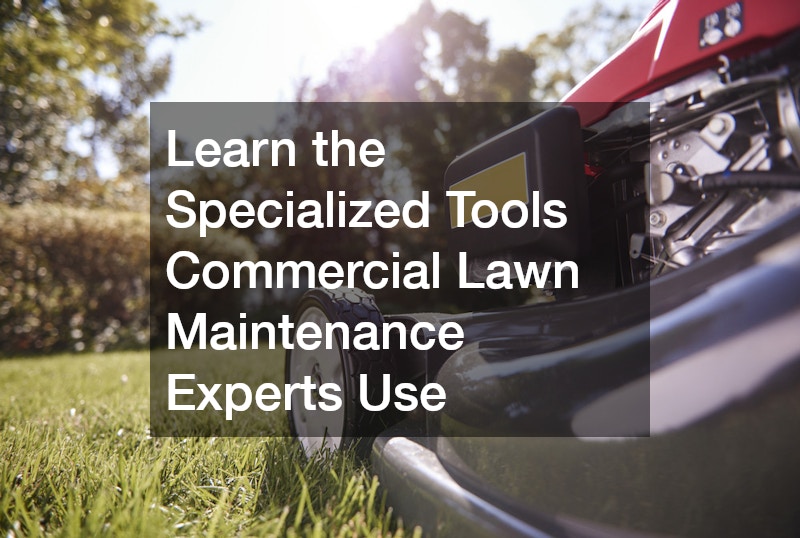Understanding the specialized tools that experts in commercial lawn maintenance utilize to achieve high-quality results is crucial for business owners.
Essential Tools
The foundation of any commercial lawn maintenance operation is built on essential tools that are indispensable for daily tasks. Fundamental tools such as mowers, trimmers, and blowers are among the first that professionals in the field acquire.
Each of these tools serves a specific purpose and contributes to efficient lawn care. Mowers come in various types, including push and riding models, each tailored for different sizes of lawns and landscapes.
In addition to general tools, commercial lawn maintenance specialists often rely on safety equipment to protect themselves and ensure compliance with local regulations. Items like gloves, goggles, and ear protection are just as crucial as the tools themselves. A well-rounded toolkit also includes hand tools such as rakes, shovels, and edgers, which are important for finishing touches and precise landscaping work. These hand tools allow experts to perform intricate tasks that machinery may not handle effectively.
Furthermore, a critical aspect of any successful lawn maintenance operation is the inclusion of transportation equipment. Commercial vehicles or trailers designed specifically for carrying equipment are essential for mobility. This allows lawn care professionals to transport their tools and equipment easily between job sites, ensuring they can efficiently respond to the needs of their clients.
Specialized Equipment
Lawn care professionals use specialized equipment not just for functionality, but also for enhancing productivity. For example, commercial-grade mowers are designed to handle larger areas more efficiently than residential versions. These mowers often come equipped with advanced features such as self-propulsion, adjustable cutting heights, and mulching capabilities that allow for a cleaner finish and healthier grass. This can significantly reduce the time spent on each job.
Additionally, tools like aerators and overseeders play a crucial role in soil health. Aerators create small holes in the lawn to allow air, water, and nutrients to penetrate deeper into the soil. This process is crucial for promoting root growth and overall lawn health. Professionals use them during peak growth seasons to ensure that the lawn remains vibrant and lush. Understanding when and how to use these machines effectively is a hallmark of experienced professionals.
Beyond mowing and aeration, lawn care specialists employ specialized blowers to clear away debris, leaves, and clippings quickly. These blowers are often more powerful than consumer-grade models, allowing for quicker cleanup. Lawn maintenance experts need to strategically use such tools to maximize efficiency while minimizing noise and disruption to the surrounding environment, especially in commercial zones.
Trending Innovations
The lawn maintenance industry is witnessing rapid innovation, particularly with the rise of electric-powered tools. Electric mowers and trimmers are gaining popularity due to their environmental benefits and reduced noise pollution. These new technologies often come with longer battery life and faster recharge times, making them an attractive option for commercial operators who prioritize sustainability alongside efficiency in their work.
Another significant trend is the integration of smart technology in lawn care equipment. IoT (Internet of Things) devices allow professionals to monitor equipment performance and maintenance needs through mobile applications. Such innovations enable lawn care experts to stay informed about their tools and anticipate any maintenance requirements, which further enhances operational efficiency. A well-informed operator is better equipped to tackle issues before they affect service quality.
Finally, advancements in robotic technology are reshaping the landscape of commercial lawn maintenance. Robotic mowers are becoming more sophisticated, capable of navigating complex lawns and performing tasks autonomously. This allows human operatives to focus on more intricate aspects of lawn care, strategically managing time and resources. As technology continues to evolve, professionals must remain adaptable and informed about these innovations to stay competitive.
Seasonal Impacts
Seasonal changes can drastically affect the types of tools and techniques lawn maintenance experts rely on. For instance, in the spring, professionals often transition to tools designed for planting and fertilizing as they prepare lawns for the growing season. This may involve the use of spreaders for seed and fertilizer, ensuring that lawns receive the nutrients they need for optimum growth.
In contrast, the fall season often requires equipment tailored for leaf removal and preparation for the winter months. Leaf blowers, vacuum systems, and mulchers become essential during this time. The choice of tool directly correlates with the needs of the grass and soil, as well as the climatic conditions. Understanding these seasonal variables helps professionals tailor their services to meet their clients’ specific needs.
Additionally, winter might see an emphasis on snow removal tools and strategies in areas prone to snow accumulation. While lawn maintenance may take a backseat during this season, maintenance of tools is crucial. Preparing for the next growing season involves ensuring all equipment is in peak condition, thus setting the stage for successful spring lawn care.
Understanding the specialized tools and their applications in commercial lawn maintenance is crucial for achieving optimal results. Utilizing a well-rounded set of essential tools, staying informed about innovations, and practicing seasonal and maintenance strategies ensures that professionals maintain a high standard of care.


